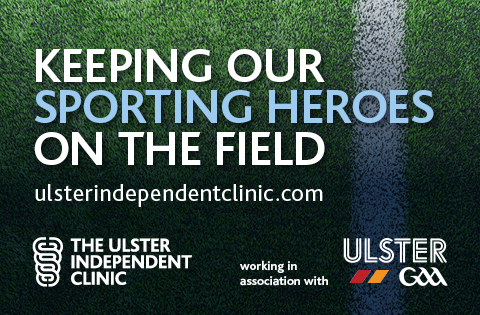Ulster Senior Football Final 2016 – Donegal v Tyrone Statistical Analysis
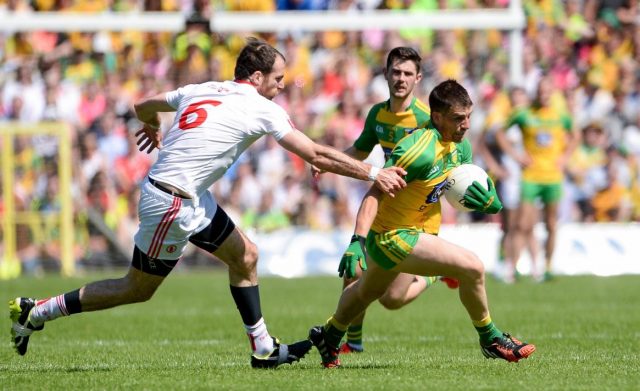
Performance analysis has become a major component of the coaching process. A combination of statistical information and video clips allow coaches to analyse performance and provide feedback on both individual and team performance. The same process also allows a coaching team to establish positives and negatives from each performance, and should provide them with a guide as to the needs of the team in subsequent training sessions.
Throughout the Ulster Senior Football Championship 2016, Ulster GAA will be providing statistical analysis, supported by video clips analysing each game.
Possession
Possession is considered a key factor in match analysis, despite the fact little evidence exists to suggest superior possession share relates to successful outcome. In many sports, possession is measured as percentage of time spent on the ball. However, in GAA, it is more pertinent to assess possession as a count – the number of possessions each team has during a game.
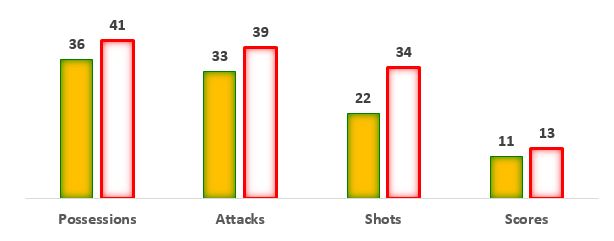
Tyrone enjoyed a greater number of possessions in the match. While Donegal probably spent more time in possession, Tyrone having bigger number of possessions presented them with more opportunities to generate scoring chances. The statistics would suggest that neither team were overly protective of the 45m line, with Donegal getting 92% of their possessions inside Tyrone’s 45m line, and Tyrone bettering that, getting 95% of possessions into the attacking zone.
The next phase of possession was the big difference between the teams on the day. Tyrone got significantly more shots taken (34 versus 22). While Donegal were more accurate, with a 50% success rate, to Tyrone’s 38%, this was not enough to compensate for their low shot count. Overall Tyrone shaded the conversion stats, converting 32% of possessions to scores, while Donegal managed 31%. Combined with having a greater share of possession, it would appears Tyrone’s willingness to take a greater number of shots enabled them to get over the line in this match.
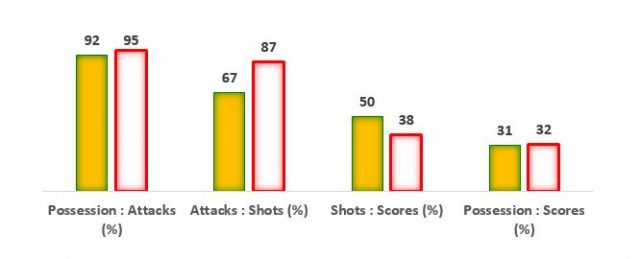
Of the 46 kick outs in total, 32 were taken short (70%). However, when the kick out was slowed and forced to longer, more contested areas, Tyrone were dominant, with Donegal only winning 2 from 8 kick outs that they had to take to this area. Tyrone only lost 2 of their own kick outs, one of which was the result of a handling error and subsequent spill over the side line – an impressive return by any measurement.
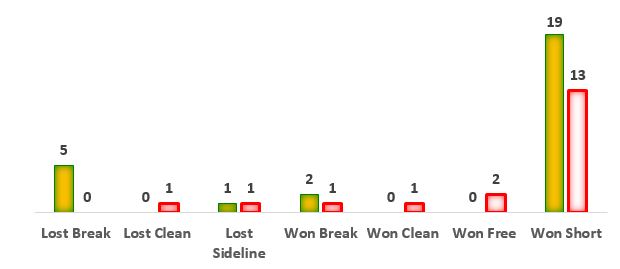
The tempo of the kick outs from both teams was notable, and the urgency of the goal keepers to get the ball back in play as quickly as possible obvious, in particular Tyrone. The average time between the ball going dead and the ensuing kick out being taken was 13 seconds for Tyrone, and 20 seconds for Donegal, excluding any kick outs that were affected by enforced stoppages in play (injuries / substitutions). Tyrone’s quickest kick out took just 4 seconds, while Donegal’s fastest turnaround was 8 seconds.
Turnovers were scarce in this match (27 in total), and reflected the cautious nature of the teams when in possession. Donegal had 16 turnovers while Tyrone only registered 11. There is no question that both teams set up ‘defensively’ but neither system appeared to be aimed at forcing early turnovers, but instead focused on containment and preventing the opposition getting scoring chances. It created a ‘stand-off’ situation with the defensive team intent on holding their defensive positioning inside the scoring zone, while the offensive team did not over commit to the attacking zone in an effort to draw out the defending team, and then exploit space left.
Both teams lost more possession in the tackle, than through any other method – another sign of both the attacking tactics and the defensive organisation deployed by both teams. A reluctance to attempt any risky longer passes was evident, but in hindsight both teams may, on occasions, have been better off attempting a long delivery. By doing so they may have lost the ball, but it also could have been high reward; a risk worth taking when they consider that they lost the ball further out the pitch without attempting anything that could have been rewarded.
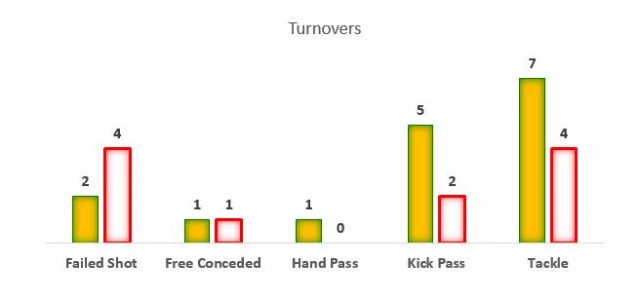
Shooting Efficiency
There was little to separate the teams when comparing their success in front of goal, with Tyrone’s much greater shot count (34 to 22) the key difference. In fact, in the second half Donegal, from 16 possessions, only registered 6 shots, 4 of which were points while 2 went wide. Testament to the organisation and intensity of Tyrone’s defence is the fact that on 7 occasions in the second half despite getting into the attacking zone, Donegal were unable to get a shot taken, and ultimately lost possession.
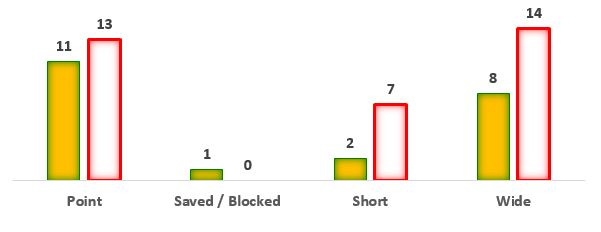
Similarly, Tyrone’s shot success of 38% was due largely to the pressure Donegal were able to exert defensively. To summarise the whole issue, Tyrone made more of an attempt at taking shots under pressure, and while it affected their accuracy they took enough attempts to compensate – basically they bought more raffle tickets giving themselves a better chance of winning the prize.
Productivity
Tyrone’s gamble, taking a number of shots under heavy pressure or from the borderline of their range gave them just enough success to be more productive than Donegal. Their greater possession combined with the much higher shot count compensated for the fact that they were much less accurate than Donegal.

Donegal – lessons for training
Both teams will be keen to learn from their performance ahead of their progression into the All-Ireland series.
Donegal may look to the following as areas worth addressing ahead of their clash with Cork;
- Shot count – to only take 22 shots in a match requires Donegal to be highly accurate (60 – 70%) to get enough scores to give them a chance of winning. They did have the ball in attacking positions a lot, with 11 attacks resulting in turnovers without generating a shot. Improving on their ability to take shots under pressure and their willingness to gamble on less certain attempts may reap rewards going forward.
- Kick outs – they only won 2 of Tyrone’s kick outs, one of which came as a result of an unforced Tyrone mistake. Challenging oppositions kick outs could give Donegal a greater possession share, which should translate to a greater number of shots;
- Pressurising opposition – Donegal only turned Tyrone over 11 times, meaning they only had 11 chances to counter attack. All their remaining possessions (with the exception of 3) were as a result of their own kick out possession, meaning Tyrone were well organised defensively and able to better contain and resist Donegal’s attack;
Tyrone – lessons for training
Tyrone could potentially look at the following areas to improve upon ahead of their All-Ireland Quarter final encounter;
- Creating pressure in more central areas of the pitch. Donegal entered the attacking zone from 33 of 36 possessions, with Tyrone not providing any great degree of resistance. By forcing play further up the pitch they take the chance of being exploited at the back, but also increase the chance of turning over in an area of the pitch that will offer a high percentage chance of a shot as a result of the counter attack;
- Shot conversion – 38% was too low, and despite some great scores, particularly late on, there were a number of better and easier chances wasted over the course of the match, predominantly in the first half;
- Variation of kick outs – Tyrone heavily favoured the quick kick out taken short, but by targeting more distant kick outs they could gain possession in more advanced positions, and create more scoring chances before their opponent has got sufficiently organised in defence.


